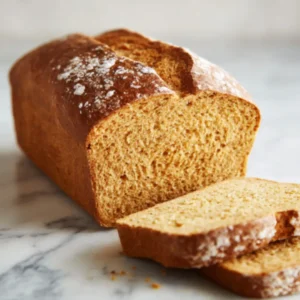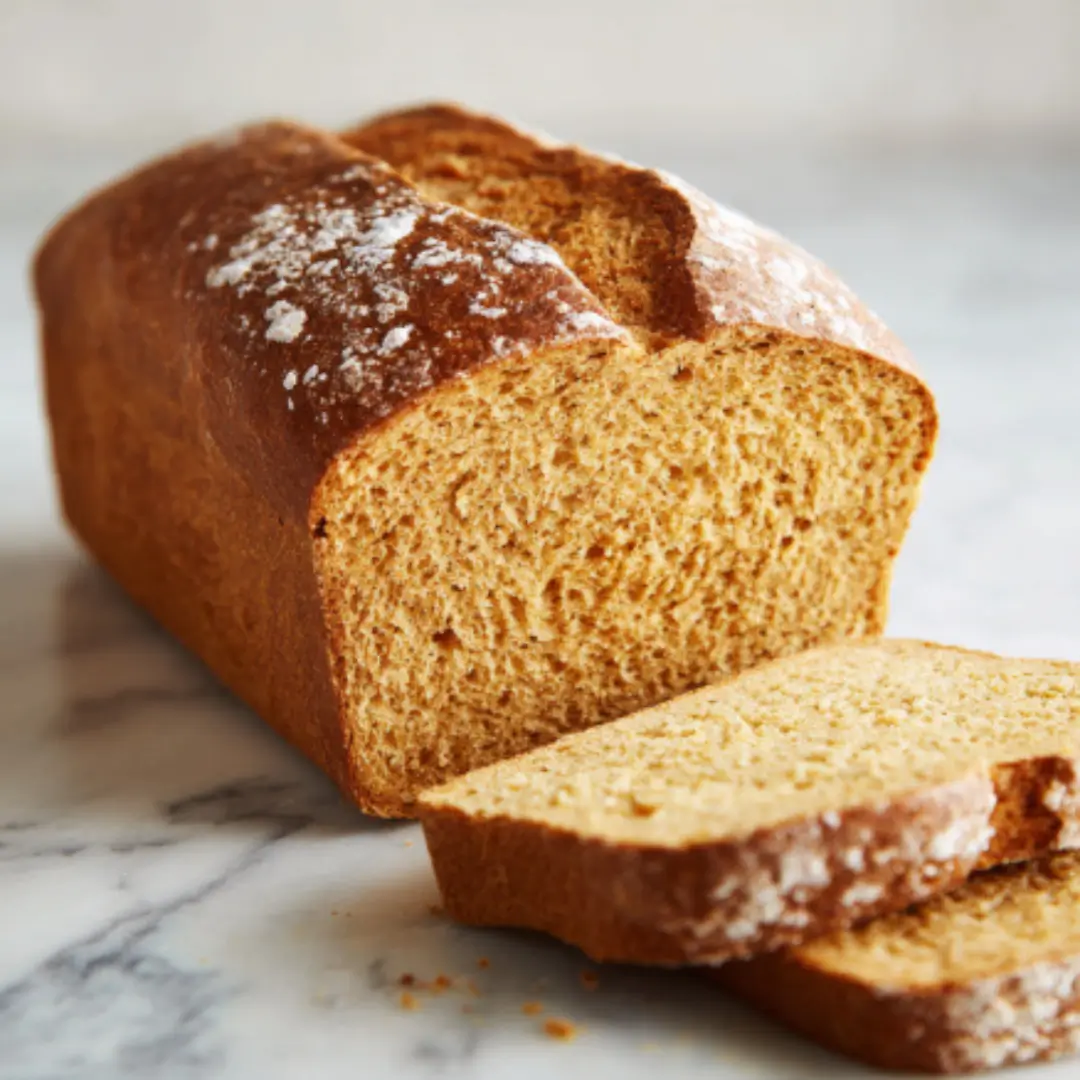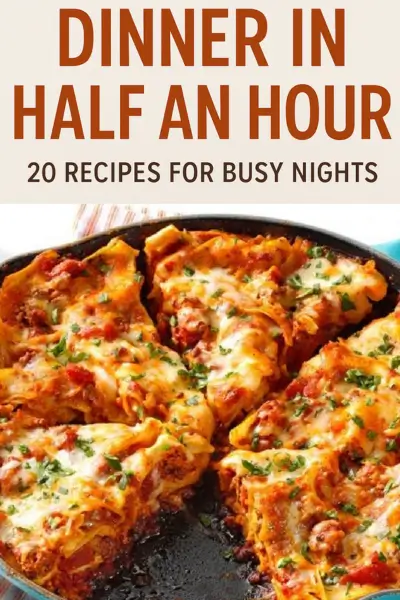Einkorn bread is a simple and healthy homemade loaf made with just a few ingredients. It uses 100% whole grain einkorn flour, which is one of the oldest types of wheat. This kind of flour has less gluten than regular wheat and a mild, nutty flavor. The recipe is easy to follow and doesn’t need any special tools or skills. If you want to bake your own bread at home that’s both tasty and nourishing, this is a great place to start.
Why We Love This Einkorn Bread Recipe
This einkorn bread recipe stands out for its simplicity and nutritional punch. It uses only a few ingredients—einkorn flour, water, yeast, honey, and olive oil—but delivers a loaf with rich flavor and a tender crumb. You’ll appreciate that it doesn’t need any fancy equipment or complex steps, just a bowl, your hands, and an oven. It’s the kind of recipe that fits into a busy routine yet feels deeply satisfying to make from scratch. The subtle sweetness from honey, the hint of olive oil, and the dense texture from whole grain einkorn make it perfect for toast, sandwiches, or enjoying plain with a bit of butter. If you’re aiming for a healthier alternative to white bread or just want to add variety to your baking, this loaf is an ideal place to start.
Ingredients about Einkorn Bread
- 300 ml (1 1/4 cups) water, room temperature
- 2 1/4 teaspoons dry yeast (or 1/2 cube fresh yeast)
- 3 tablespoons olive oil
- 1 tablespoon honey
- 550 grams (3 2/3 cups) einkorn flour
- 1 teaspoon sea salt
How to Make Einkorn Bread Directions
You’ll begin your bread-making process by combining the liquids and yeast. Pour the water into a large mixing bowl, then whisk in the yeast, olive oil, and honey. This step ensures that the yeast activates evenly, leading to a good rise later.
Next, incorporate the einkorn flour in stages. Add about a third of the flour first and mix until it’s mostly absorbed. Then add the remaining flour along with the salt. Stir until a shaggy, sticky dough forms. This dough doesn’t require perfection at this point; it just needs to come together.
Cover the bowl with a cloth or lid and let the dough rest for about ten minutes. This short rest period allows the whole grain einkorn to fully absorb moisture, making it easier to knead. After resting, transfer the dough to a lightly floured surface and knead gently. You may need to add a sprinkle of flour here and there, but don’t overdo it—too much flour will toughen the loaf. Knead for about six minutes until the dough feels soft and smooth but not overly sticky.
Place the kneaded dough back in the bowl and cover it. Let it rise at room temperature for around an hour until it doubles in size. This rise gives the bread structure and creates a light crumb.
Once risen, punch the dough down and transfer it again to a floured surface. Gently shape it into a rough rectangle, then roll it into a tight spiral. This shaping technique helps the loaf keep its form during baking and provides a beautiful internal structure when sliced.
Prepare your bread tin by greasing it lightly or lining it with parchment paper. Place the dough seam-side down into the tin and cover it again. Allow it to rise a second time for about 30 minutes, just until it becomes puffy.
While the dough is rising again, preheat your oven to 180°C (350°F). Once the dough is ready, place it in the oven and bake for 40 to 45 minutes. You’ll know it’s done when the top turns a deep golden brown and the internal temperature reaches about 90°C (190°F).
Allow the bread to cool in the pan for about ten minutes, then transfer it to a wire rack to cool completely. This cooling step is essential for the crust to set and for the interior to finish cooking.
How to Serve Einkorn Bread
There are countless ways you can enjoy this einkorn bread. Serve it warm with a dab of butter or a drizzle of honey for breakfast. Its dense texture makes it perfect for hearty sandwiches—think avocado and tomato, hummus and greens, or classic nut butter and banana. You can also toast it and top with your favorite spreads. For soups and stews, this bread makes an excellent side. Its slightly sweet, earthy flavor complements both savory and sweet dishes. You might even cube it and toast the pieces to make croutons for salad or blend them into breadcrumbs for use in other recipes. However you serve it, this loaf offers a satisfying bite every time.
Expert Tips: Einkorn Bread
- Measure the flour carefully: Einkorn flour is delicate and absorbs moisture differently from modern flours. Use a kitchen scale for best results, as cups can vary.
- Don’t skip the rest period: Allowing the dough to rest before kneading helps hydrate the flour fully and makes the dough less sticky.
- Be gentle with kneading: Over-kneading can lead to a dense, tough loaf. Einkorn requires a light hand—just enough to form a smooth dough.
- Use a thermometer: If you’re unsure whether the bread is done, check the internal temperature. A finished loaf should register about 90°C (190°F).
- Cool completely: Letting the bread cool ensures the crumb sets properly. Cutting too soon can result in a gummy texture.
- Use fresh yeast: Fresh or active yeast will give you the best rise. Check expiration dates before starting.
- Experiment with add-ins: Once you’re comfortable with the basic recipe, try adding seeds, dried fruit, or herbs for more variety.
How to Store Einkorn Bread
To keep your einkorn bread fresh, store it in an airtight container or wrap it tightly in reusable beeswax wrap or plastic. Leave it at room temperature for up to three days. For longer storage, freeze the loaf. Slice it before freezing so you can take out only what you need. Place slices in a freezer-safe bag, and when ready to eat, toast or thaw as needed. Avoid storing the bread in the refrigerator as it tends to dry out more quickly. If stored properly, frozen slices can last for up to three months without losing their texture or flavor.
Variation of Einkorn Bread
Once you’ve mastered this basic recipe, you can experiment with different versions. Here are a few ways to vary your einkorn bread:
- Seeded loaf: Add a mix of sunflower seeds, sesame, or flax for a boost of texture and flavor.
- Sweet version: Include dried cranberries, chopped nuts, and a bit of cinnamon for a breakfast bread.
- Savory herb: Mix in chopped fresh herbs like rosemary, thyme, or chives to pair with soups and salads.
- No-knead method: If you prefer less hands-on work, try a no-knead version by letting the dough rest overnight.
- Mini loaves or rolls: Divide the dough and shape into rolls or smaller loaves for individual servings or lunchboxes.
- Sourdough hybrid: Replace part of the yeast with a sourdough starter for added tang and health benefits.
Feel free to customize the recipe to match your taste and dietary preferences.
FAQ
Is einkorn bread gluten-free?
No, einkorn bread is not gluten-free, but it contains a lower level of gluten compared to modern wheat. Many people with gluten sensitivities find it easier to digest.
Can I use all-purpose flour instead of einkorn flour?
This recipe is specifically developed for whole grain einkorn flour. Using all-purpose flour will change the hydration and texture. Stick to einkorn for best results.
Why is my dough so sticky?
Einkorn dough tends to be stickier than wheat dough. Don’t over-flour—use wet hands or a dough scraper to handle it.
Can I make this bread without a bread tin?
Yes, you can shape it into a round or oval loaf and bake it on a sheet, but a tin helps keep the structure.
What makes einkorn flour healthier?
Einkorn is an ancient grain with more protein, antioxidants, and essential nutrients than many modern flours. It’s less processed and often easier to digest.
How do I know when the bread is fully baked?
Check for a dark golden crust and use a thermometer—your loaf is done when it reaches about 90°C (190°F) internally.
Can I double this recipe?
Yes, you can double the ingredients and divide the dough between two pans. Make sure to adjust rising times if needed.

Einkorn Bread
Equipment
- Mixing Bowl
- Bread Tin
- Oven
Ingredients
- 300 ml water room temperature
- 2 1/4 teaspoons dry yeast (or 1/2 cube fresh yeast)
- 3 tablespoons olive oil
- 1 tablespoon honey
- 550 grams einkorn flour (about 3 2/3 cups)
- 1 teaspoon sea salt
Instructions
- In a large mixing bowl, combine water, yeast, olive oil, and honey. Whisk until well combined.
- Add a third of the einkorn flour and mix until mostly absorbed. Then add the remaining flour and salt, stirring until a shaggy dough forms.
- Cover the bowl and let the dough rest for 10 minutes to hydrate the flour.
- Transfer the dough to a floured surface and knead gently for about 6 minutes until smooth.
- Place the kneaded dough back in the bowl, cover, and let it rise for about 1 hour until doubled in size.
- Punch down the dough and shape it into a rectangle, then roll it into a tight spiral.
- Grease a bread tin and place the dough seam-side down. Cover and let it rise for another 30 minutes.
- Preheat your oven to 180°C (350°F). Bake the bread for 40 to 45 minutes until golden brown and the internal temperature reaches 90°C (190°F).
- Allow the bread to cool in the pan for 10 minutes, then transfer to a wire rack to cool completely.
Send me this recipe!
Just enter your email below and get it sent straight to your inbox!


